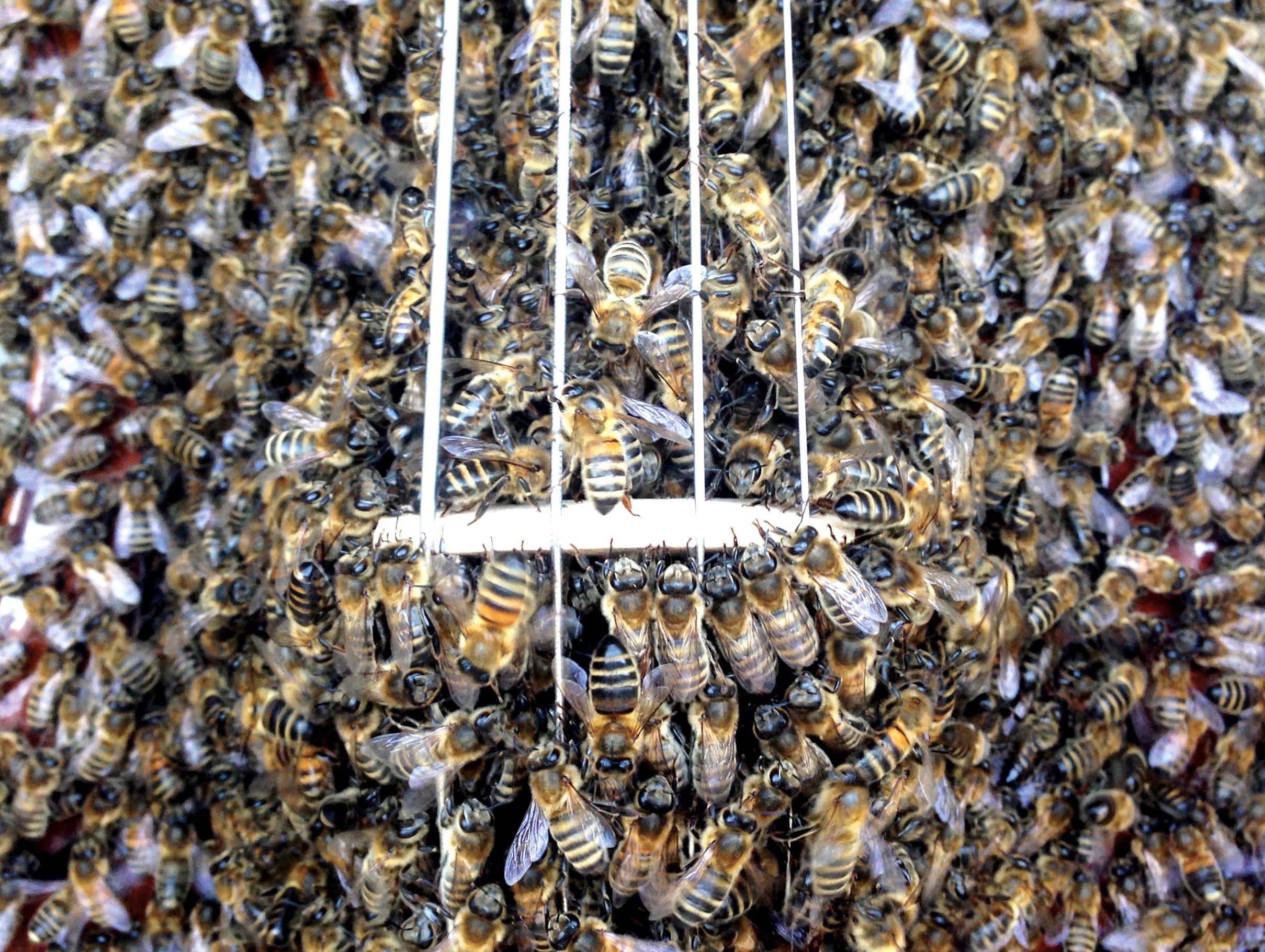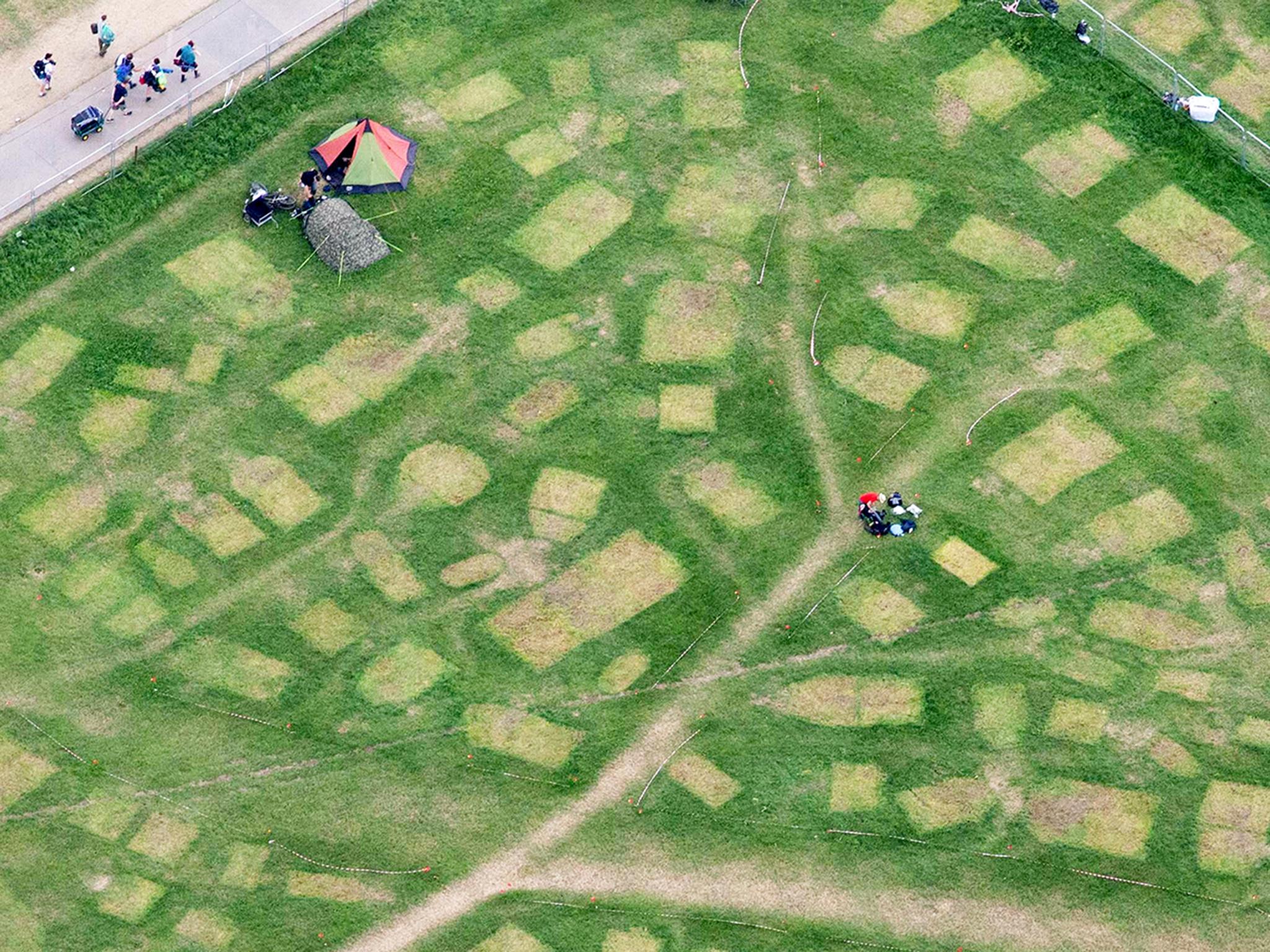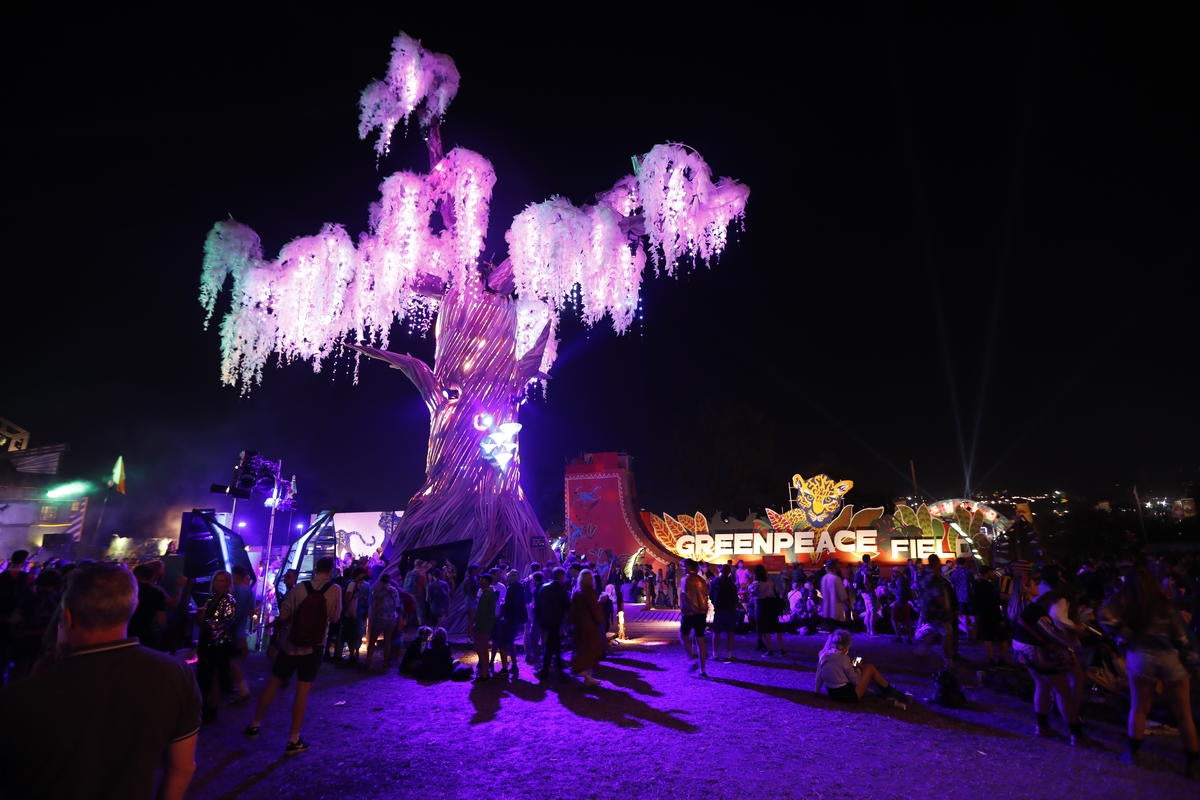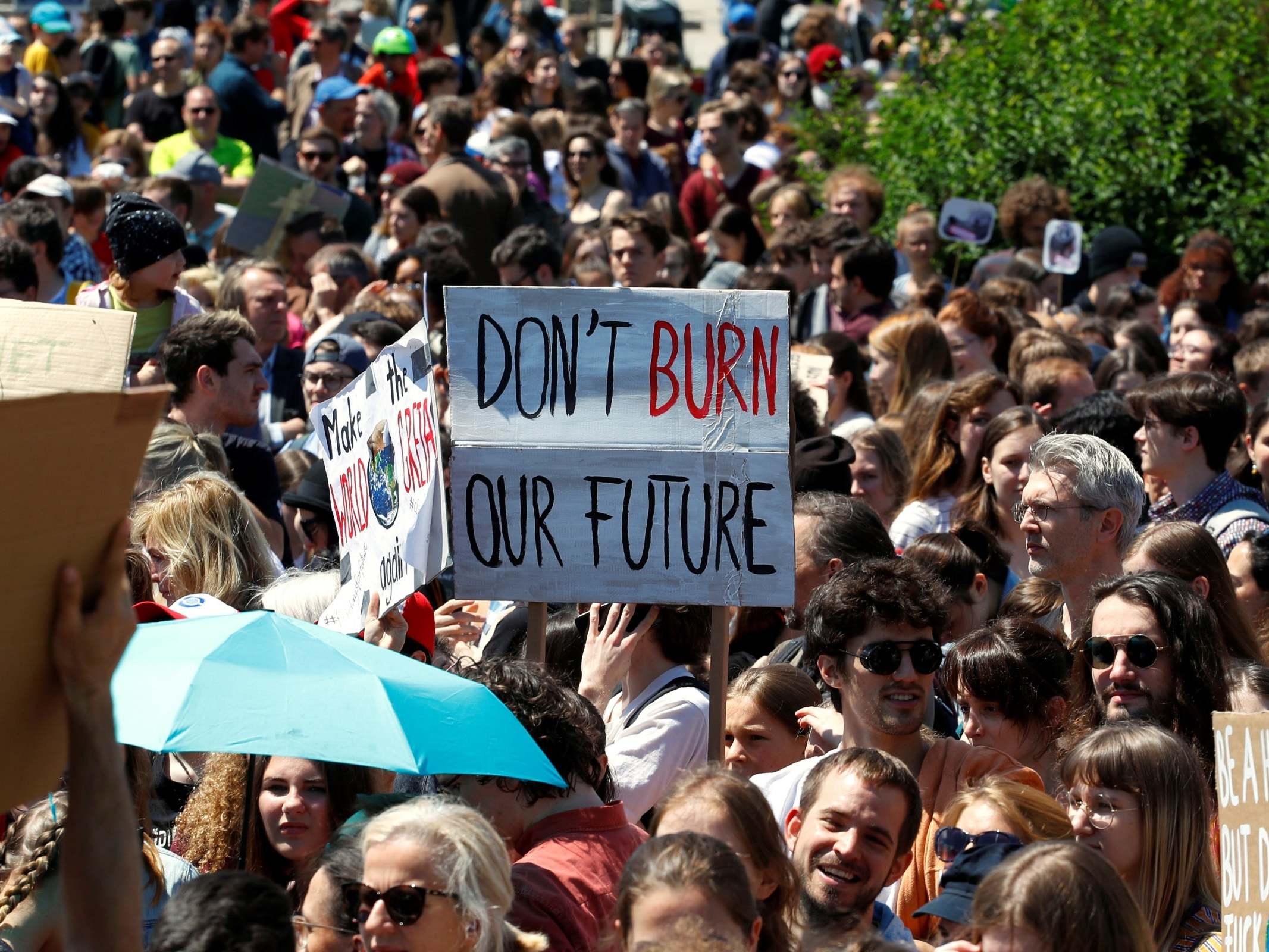Wolfgang Buttress on climate change awareness at Glastonbury: ‘Young people know that unless they do something, we’re f***ed’
Artist behind the Beam installation at this year's festival tells Mark Beaumont why he thinks we've forgotten the awe that nature can inspire, and how he hopes his work will help bring it back

Saturday 29 June, Glastonbury 2019. It’s 31 degrees, and an unforgiving sun beats down on the glitter-cheeked throng jostling for shade across a scorched Vale Of Avalon, it’s clear – as Frank Turner plays a secret gig in the tucked-away Greenpeace field – that we are smack in the centre of the new climate struggle.
This once cult-like enclave – where families escape the bustle, daredevils take their life in their hands on the vertical drop slide, and budding eco-warriors tut at the latest rainforest devastation figures – has now become the very heart of the festival’s ethos. After all, how could we unite a planet with peace and love if the whole place is uninhabitable?
The clock ticks. Fifty years to make the fundamental changes needed to tackle climate change say some experts. Twenty years, others say. And even more warn that it will take just 12 years before the damage becomes irreversible. Scientists warn of the planet-choking gases about to be unleashed from melting polar ice-caps, which would triple the carbon dioxide in our atmosphere. Millennials see extinction looming within their lifetimes. Protesters glue themselves to London trains and Parliamentary public galleries – their insignia is an hourglass.
Across Worthy Farm, from the post-apocalyptic Shangri-La to the flame-spewing crane of Pangea – itself a monument to the monstrosity of fossil fuel – the slogans, themes and images of 2019’s festival all focus on the encroaching climate crisis, and it’s at the Greenpeace Field that this concern is consolidated into action. On the first day of the festival, thousands of attendees join an Extinction Rebellion march from the Greenpeace Field to the Sacred Space, where they form a gigantic version of the hourglass symbol.
Greenpeace UK campaigns director Pat Vanditti hopes the message was heard. “The idea was to give people a voice,” he says, “to tell corporate leaders and politicians that business as usual is no longer an option and we need to deal with biodiversity and climate crises.
“What we’re trying to do is highlight the biodiversity crisis and the climate crisis we’re collectively facing. We have a big task ahead of us dealing with climate change. A million species are likely to go extinct in the foreseeable future. If you look at the 46 degrees in France and the very hot weather here, you realise business-as-usual needs to change dramatically. Organisations like ourselves, Extinction Rebellion, the student school strikers and artists like Wolfgang Buttress… it really is all hands to the pump.”

Buttress was the artist behind the celebrated sculpture The Hive, which was the talk of the 2015 Milan Expo and Kew Gardens on its arrival in 2016. It’s a huge latticework of aluminium honeycombs, into which music controlled by accelerometers inside a real beehive was fed. His latest project, Beam, is the new focus of the Greenpeace Field, set to return here every year. It consists of hundreds of illuminated, sustainably sourced tree trunks arranged in a maze, gradually rising to form a central hexagonal space lined with wood and LCD screens. As with The Hive, the sounds within the space are controlled by bees, this time from Michael Eavis’s own beehive, and linked to background tones created by artists including Jason Pierce from Spiritualized, Sigur Ros, Youth, Daniel Avery and Kelly Lee Owens.

“I told them about the bees,” Buttress explains. “They knew about the pavilion when it came back to the UK and they wanted to get involved. It had a pedigree. We got some accolades. We’d played Glastonbury and Coventry Cathedral and End of The Road festival. It had a heritage.”
Beam is an engrossing 24-hour experience. In the morning the bees are relatively docile, but as they begin foraging in the afternoon their music becomes more active, reaching a frenzy of sound and activity in the evenings when a library of images, also bee-controlled, appears on the inner chamber’s screens. Buttress was keen to create an artwork finely tuned to the experience and concerns of the festival. “With The Hive in Kew Gardens, I knew what the landscape was going to be, and in Milan when I did the UK Pavilion, I designed the landscape as well. I created the whole context for The Hive. It was really important that there were views in and views out. It played with the sense of scale. You could see people walking through it and they almost looked like bees in the hive from afar, and when you’re inside The Hive it frames nature and makes these lenses. It was kind of like a portal but its relationship with its immediate environment was really important.”
Enjoy unlimited access to 100 million ad-free songs and podcasts with Amazon Music
Sign up now for a 30-day free trial. Terms apply.
ADVERTISEMENT. If you sign up to this service we will earn commission. This revenue helps to fund journalism across The Independent.
Enjoy unlimited access to 100 million ad-free songs and podcasts with Amazon Music
Sign up now for a 30-day free trial. Terms apply.
ADVERTISEMENT. If you sign up to this service we will earn commission. This revenue helps to fund journalism across The Independent.

“Here, there’s so much visual chaos at a festival, it’s just relentless, it’s so busy,” he continues. “There are so many people, so many attractions, so many bands. To me it was really important it was connected to Glastonbury, but somehow when you were in this piece that it was a way of getting away from it so you could think about the idea. So, this one it was this idea of creating a clearing in a wood…when you’re in the centre, in this hexagonal room, you’re not aware of anything else. You look up and see a few tops of trees and the sky, so there’s a nice relationship between yourself, the earth, the sky and the trees. We’ve designed it in timber but it’s incredibly great for sound insulation. When you’re inside you don’t hear anything around you.”
Buttress became aware of the plight of the honey bee – essential actors in the process of creating thirty per cent of our food - while researching the theme of “feeding the planet” for the Milan Expo with the help of Nottingham University’s Dr Martin Bencsik. His first hands-on experience with a hive was “an epiphany in a way. The smell was incredible of the honeycomb, but the sound was this deep hum, this drone to the earth”.
“I’m not a hippy but it felt like there was a real connection between me and the bees and the earth,” he says. “I felt I had to express this energy of the hive… We have this strange symbiotic relationship with bees, we need them to pollinate our crops and because we’ve chopped down so much of their original habitat, forests and woods, they need places to live. When it works well, it’s a nice symbiotic relationship between the two.”
He wanted his installations to have the same effect on the viewer, “where the audience would have an emotional connection to the landscape and the bees”. Immersive music was his go-to tool. Feeding a sound-stream of bees into a Nottingham studio for a group of musicians, he quickly discovered that bees hum in the key of C, and suddenly a world of human-insect collaboration opened up – the ensemble of musicians who created the music released an album of their man-bee music called “One” on Rivertones and continue to write and perform as BE.
Buttress’s interest in bees goes far deeper than mere artistry. He’s excited to be working with Eavis’s Cornish black bees as they are resistant to the Varroa mite, which experts believe might be helping kill off bees that aren’t able to swarm due to industrial farming methods. And he’s pleased at the wide variety of audience that Beam has attracted over Glastonbury weekend, from grey-haired ramblers to lovers, dope-smokers and awestruck children.
“When you see a lot of the people coming through the structure here, people are mesmerised,” he says. “That’s one of the things with nature. Somehow, we’ve lost that sense of wonder. It’s the whole romantic thing, the sense of the sublime, that it’s terrifying but beautiful at the same time. When it does hit us, when we see the big ocean or a great mountain or a lake, it’s really powerful.”
Is the encroaching threat of climate disaster changing minds yet? “There does seem to be a changing conscience,” Buttress argues. “When I first started talking about the bees five years ago a lot of people weren’t aware of it,” he says. “Maybe they didn’t understand how important the pollinators were, didn’t understand the crisis there was facing us. Where I’ve got faith is the younger generation. Things are changing – they realise it’s gonna be in their lifetime, unless they do something we’re f***ed. It’s as simple as that. That’s an everyday conversation, it’s not some crazy out-there leftfield hippy way of thinking. It’s come into the mainstream, and it has to because it’s essential. People sometimes talk about hope but to me that’s not really the right word. That means somehow that it’s someone else’s responsibility. It’s action that’s needed, solid actions.”

“We’re up against some pretty entrenched interests,” says Vanditti. “We have companies like BP who two weeks ago we stopped one of their oil rigs from going out into the North Sea to drill for 30 million barrels of oil. There are big companies like BP and others who want to carry on with business as usual. I think what people are waking up to is that this is not climate as usual and they are no longer going be able to carry on doing what they’ve been doing in the past. By the same token, the government is talking a lot about climate emergency but when it comes to action and actual policy they aren’t going anywhere near where it needs to be. They’re still providing billions of pounds to the oil and gas industries in the UK, they’re doing very little about the dramatic shift that’s needed towards electric cars and public transit, and doing very little to encourage eating less meat and the things that need to happen to have a healthy environment.”
Still Vanditti sees glimmers of hope. “Last month we had the longest stretch of coal-free power generation since we started generating electricity in the mid-1800s, so there is a lot of positive stuff happening, we’re seeing more and more people become flexitarian or eat less meat, which I think is really positive. We have a big task ahead of us but it is possible."
Join our commenting forum
Join thought-provoking conversations, follow other Independent readers and see their replies
Comments
Bookmark popover
Removed from bookmarks